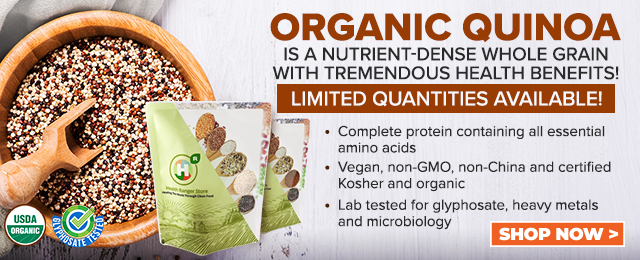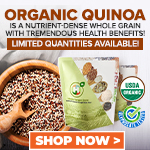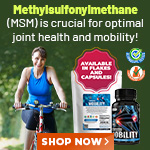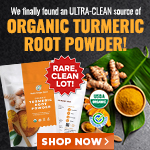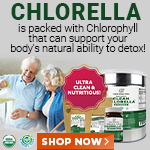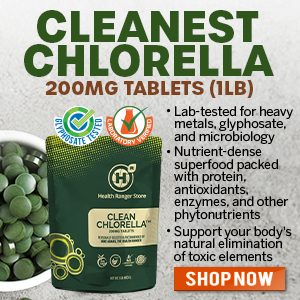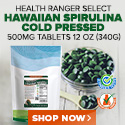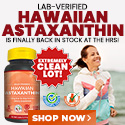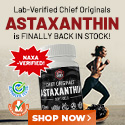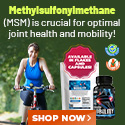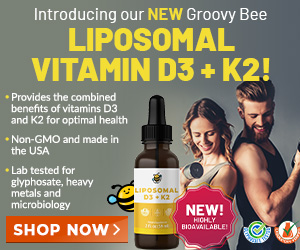The astonishing radioprotective effects of MISO explained: Nagasaki, Hiroshima and Chernobyl survivors speak out... eat to live!
 Tuesday, May 19, 2015
Tuesday, May 19, 2015
by Mike Adams, the Health Ranger
Tags: miso, radioprotective effects, Hiroshima survivors
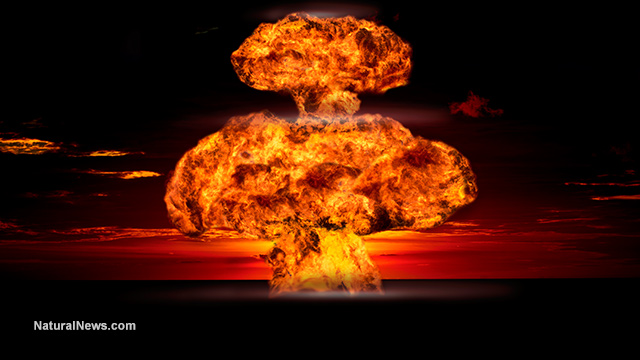
(NaturalNews) One of the most amazing chapters in the true history of healing foods comes from the final chapter of World War II, in the aftermath of the United States' dropping of two atomic bombs on civilian populations in Japan. Millions of innocent civilians were exposed to extreme levels of ionizing radiation, and rates of cancer immediately skyrocketed thereafter.
Yet some people seemed to be immune to the effects of harmful radiation... even people who were less than a mile from the epicenter of the atomic bombs. What was different about these people? As you'll learn here, they were all consuming miso, a staple of the Japanese diet made from fermented soybeans, rice and salt.
Miso, as you'll see here, winds its way through the history of nuclear accidents and atomic bombs, always serving as a healing food with extraordinary properties that come from the fermentation process, not the soy itself. (Fermenting soy radically alters its chemical properties, changing it from an estrogen-mimicking food to an anti-estrogenic food.)
Miso and Nagasaki
A study published in the journal Toxicologic Pathology entitled "Beneficial Biological Effects of Miso with Reference to Radiation Injury, Cancer and Hypertension" details some of this enlightening history:When the 2nd atomic bomb was dropped in Nagasaki on August 9th, 1945, physician Tatuichiro Akizuki, along with 20 employees, was taking care of 70 tuberculosis patients at "Uragami Daiichi Hospital" (St. Francis Hospital) about 1.4 km away from the hypocenter. However, these people including Dr. Akizuki did not have any acute radiation disease. Dr. Akizuki considered that this was the result of consuming cups of wakame miso soup (miso soup with garnish of wakame seaweed) every day. Later, this was translated into English and became known in the West. In the Chernobyl of nuclear power plant accident on April 26, 1986, in the Ukraine, many Europeans consumed miso soup as a preventive measure for radiation diseases. Therefore, Dr. Akizuki can be considered to be the first person in Japan to point out radioprotective effects of miso for maintaining health.
What Dr. Akizuki concluded is that drinking miso soup before radiation exposure offered a significant radioprotective effect, effectively blocking the negative effects of radiation poisoning.
Radioprotective effects created by the fermentation
The study mentioned here, published in 2013, was conducted by Japanese researcher Hiromitsu Watanabe. In it, he tested various types of miso on mice exposed to ionizing radiation. He was looking to answer the question of whether soybeans themselves have a radioprotective effect, or if the protection comes from something created by bacteria during the fermentation process (miso is made from fermented soy).The answer was clear: "The mechanism of the radioprotective effect of miso is considered to be closely related to substances produced during fermentation stage," Watanabe explains.
It's the bacteria, in other words, that generate substances which have a radioprotective effect as documented in the study. As he explains in the study, "The cytokine-like substance in miso may conceivably play an important role in the protection and/or the recovery and repopulation of critical tissue elements when they are given prior to and during radiation exposure."
Click here to read the full study yourself.
"The Cancer Prevention Diet"
This idea is further supported in the book entitled "The Cancer Prevention Diet: The Macrobiotic Approach to Preventing and Relieving Cancer" by Michio Kushi. In it, he relates this story from a courageous woman who used miso and the macrobiotic diet to survive extreme radiation poisoning due to atomic bombs:Radiation Sickness in Hiroshima
In 1945 Sawako Hirago was a ten-year-old schoolgirl in Hiroshima. In the atomic bombing on August 6, she was exposed to severe radiation that burned her face, head, and legs. The burned parts swelled up to nearly three times their normal size. In the hospital, doctors feared for her recovery because one-third of her body was burned. Her mother gave her palm healing therapy over the abdomen every night, and Sawako ate the only food available, two rice balls and two daikon radish pickles each day. Inside the rice balls was umeboshi (pickled salted plums).
Although the medical doctors gave up on her, Sawako survived: "My mother didn't show me a mirror until I was cured. However, I was able to see my hands and leg, which were very dirty and had a bad, rotten smell. On the rotten spots there were always flies. When the skin healed, I broke it because it was itchy; finally it became a keloidal condition. I didn't see my face until it was finally cured. However, sores remained on my nose and pus remained on my chest. My hands and chest had masses of skin which remained until I was twenty." Because of her disfiguration, Sawako was ridiculed, nicknamed "Hormone Short," and told she could never marry or have children. After completing school, she became a high school physics teacher and met a young chemistry teacher who ate very simply. The couple married and attended lectures by George Ohsawa, the founder of modem macrobiotics in Japan, and he said that only people practicing macrobiotics would survive future nuclear war.
After talking with Mr. Ohsawa, Sawako gave up the modern, refined food that she had been eating since her survival and started eating brown rice and other foods. To her surprise, her problems including anemia, leukemia, low blood pressure, falling hair, and bleeding from the nose, started to clear up. Within two months, she was elated: "My face became beautiful."
Sawako went on to have seven healthy children and raised all of them on brown rice, miso soup, vegetables, seaweed, and other healthy food. Source: Sawako Hiraga, "How I Survived the Atomic Bomb," Macrobiotic. November/ December 1979.
A similar story of miso and the macrobiotic diet is also related from Russia, in the aftermath of the Chernobyl nuclear accident:
Diet and Radiation-related Cancers in Russia
In 1985 Lidia Yamchuk and Hanif Shaimardanov, medical doctors in Chelyabinsk, organized Longevity, the first macrobiotic association in the Soviet Union. At their hospital, they have used dietary methods and acupuncture to treat many patients, especially those suffering from leukemia, lymphoma, and other disorders associated with exposure to nuclear radiation. Since the early 1950s, wastes from Soviet weapons production had been dumped into Karachay Lake in Chelyabinsk, an industrial city about nine hundred miles east of Moscow. In particular they began incorporating miso soup into the diets of patients suffering from radiation symptoms and cancer. "Miso is helping some of our patients with terminal cancer to survive," Yamchuk and Shaimardanov reported. "Their blood (and blood analysis) became better after they began to use miso in their daily food."
Meanwhile, in Leningrad, Yuri Stavitsky, a young pathologist and medical instructor, volunteered as a radiologist in Chernobyl after the nuclear accident on April 26, 1986. Since then, like many disaster workers, he suffered symptoms associated with radiation disease, including tumors of the thyroid. "Since beginning macrobiotics," he reported, "my condition has greatly improved."
Radioprotective foods and conventional cancer treatment
The idea that miso may offer radioprotective effects against extreme radiation exposure has also given support to its potential use as an adjunctive therapy for cancer patients undergoing radiation treatments.While oncologists are likely to dismiss the idea outright -- they don't believe in any healing foods, nutrition or protecting healthy cells at all -- the concept has real scientific merit. This study entitled "Radioprotection of Lung Tissue by Soy Isoflavones" concluded that "soy isoflavones showed the potential to enhance radiation damage in tumor nodules and simultaneously protect normal lung from radiation injury."
The study was based on non-fermented soy, which is different from miso. But because miso is made by fermenting soy, many soy isoflavones persist during the fermentation and are present in the resulting miso.
The conclusion of the authors was that non-fermented soy isoflavones protect healthy cells from radiation damage:
Soy isoflavones given pre- and post-radiation protected the lungs against adverse effects of radiation including skin injury, hair loss, increased breathing rates, inflammation, pneumonitis and fibrosis, providing evidence for a radioprotective effect of soy.
They also conclude that soy might be useful to use alongside radiotherapy to both increase the toxicity of radiation to CANCER cells and decrease the toxicity of radiation to HEALTHY cells. The cancer industry, of course, has zero interest in any of this, since toxicity and cell damage is central to the industry's repeat business model of recurring cancer. But for those individuals who wish to practice dietary habits that may help prevent or reduce the damaging effects of ionizing radiation, fermented soy in the form of miso may be an intelligent and practical choice.
It's clear that additional scientific research is desperately needed in this area. What if cancer radiotherapy could be made less toxic and more effective at the same time? Shouldn't modern medical science investigate this further?
The longer the fermentation, the better it worked
Another important realization from the science is that longer fermentation times for the miso resulted in greater therapeutic value in test subjects.This is documented in detail in this study on the radioprotective effects of miso. As the study details, three different miso products were tested:
1) Miso fermented for just 3-4 days
2) Miso fermented for 120 days
3) Miso fermented for 180 days
After testing these three grades of miso, two key realizations were learned:
1) ALL miso provided a radioprotective effect in the study.
2) The 180-day miso provided the most potent radioprotective effect.
"A delay in mortality was obvious in all three miso groups," says the study. But it also warns that once the radiation exposure is too great, even miso cannot stop the mortality rate. Extremely high radiation doses, in other words, were able to override miso's protective effects and cause mortality in a few days, regardless of how much miso was consumed. What dose caused this? 15 Gy (gray). The "gray" unit describes the amount of ionizing radiation absorbed by tissue. 15 Gy is equal to about 15,000,000 microsieverts or 1.5 million millirems. If you absorb 1.5 million millirems all in a short time span, you're dead no matter what.
Why I don't eat soy, but I do eat organic miso
Personally, I don't eat soy. No soy burgers, no soy protein, no soybean oil and not even steamed edemame. But I do eat small quantities of miso from time to time because fermented soy is unique. It's not the same food as unfermented soy.If you eat miso, make sure it's made from organic, non-GMO soybeans. Soy is one of the most commonly genetically modified crops, so you have to choose organic to avoid the GMOs. You also have to be careful not to over-consume miso. The fermentation process can create glutamic acid as one of its products, and for those who are highly sensitive, even a little glutamic acid can cause a headache. Tomatoes and seaweed also contain glutamic acid, so if you're able to eat those without any problem, then you're probably not sensitive to it.
Miso comes in different grades based on fermentation duration. The longer the fermentation time, the higher the grade and the more expensive the product. There's obviously a point of diminishing returns on this, too: beyond 180 days of fermentation, there's unlikely to be any additional measurable benefit to the miso. Even fermentation of just 3-4 days produces significant beneficial properties.
Where to get freeze-dried organic miso powder
Understanding the need for radioprotective foods, we've sourced a very limited supply of what may be the most pristine source of freeze-dried organic miso in the United States. We offer this as a nourishing food, without any claims of curative effects or radioprotection (see below).Our Health Ranger Select Freeze-Dried Organic Yellow Miso Powder is available in 100 gram pouches and also in 1.3kg #10 cans for longer shelf storage.
This is medium-grade miso (it's yellow in color) that balances fermentation time with affordability. It's entirely made in the USA, using these U.S.-derived, certified organic ingredients: organic soybeans, organic rice, salt, organic Aspergillus oryzae (fermenting agent).
We've laboratory-verified this miso powder to meet our A+++ high standard published at LowHeavyMetalsVerified.org. The product is certified kosher and it's vegan, too. Because it's freeze-dried, this powder retains nearly all the color, taste, texture and nutrients found in the original fermented miso. As a powder, it has an extended shelf life and very high portability.
We cannot claim that this miso will have the same radioprotective effects of the miso products described in the studies listed above. They are not from the same manufacturers of miso, and they may differ somewhat in their molecular composition. So we are offering our miso purely as a health-promoting FOOD, and not as some sort of magic bullet defense against nuclear accidents or nuclear war. Radioprotective effects may exist in this miso, but before I would be comfortable making such claims, I would need to have it tested and documented in the lab first. Because I'm not willing to subject mice to radiation just to see how quickly they die, this study is probably never going to happen. (I don't condone medical experiments on animals.)
Nevertheless, if you wish to enjoy a delicious source of organic miso, which is part of the health-promoting macrobiotic diet, we offer this honest, lab-verified yellow miso in a convenient freeze-dried format. At the very least, you'll enjoy a nutritious source of health-supporting nutrients found in organic miso.
Quantities are extremely limited, and we were only able to source a few hundred kilos of this material, so it won't last long in our store. As usual, it's extremely difficult to find clean, quality sources of anything these days. That's why we always run out of the "good stuff" so quickly. We simply refuse to lower our standards and sell the garbage bulk products you'll find on Amazon.com and elsewhere.
To my knowledge, the Natural News Store is the only operation in the world that tests every single batch of everything we sell for heavy metals. We are GMP-compliant, USDA certified organic, exhaustively documented and routinely audited by the FDA and the state of Texas. I believe you will not find a more pristine supplier of premium-quality healing foods anywhere on the planet.
Learn more about our Freeze-Dried Organic Yellow Miso Powder.
A simple, 10-minute miso soup recipe
Ingredients:2 cups of water
4 tsp of Yellow Miso Powder
2 tablespoons sliced scallions (optional)
1 egg (optional)
Directions: Bring the water to a boil, then turn heat to low, add miso powder and stir well. Avoid boiling miso soup for very long after adding the miso, or it will lose its flavor.
Miso at FETCH.news
Get independent news alerts on natural cures, food lab tests, cannabis medicine, science, robotics, drones, privacy and more.
 About the author:Mike Adams (aka the "Health Ranger") is a best selling author (#1 best selling science book on Amazon.com) and a globally recognized scientific researcher in clean foods. He serves as the founding editor of NaturalNews.com and the lab science director of an internationally accredited (ISO 17025) analytical laboratory known as CWC Labs. There, he was awarded a Certificate of Excellence for achieving extremely high accuracy in the analysis of toxic elements in unknown water samples using ICP-MS instrumentation. Adams is also highly proficient in running liquid chromatography, ion chromatography and mass spectrometry time-of-flight analytical instrumentation.
About the author:Mike Adams (aka the "Health Ranger") is a best selling author (#1 best selling science book on Amazon.com) and a globally recognized scientific researcher in clean foods. He serves as the founding editor of NaturalNews.com and the lab science director of an internationally accredited (ISO 17025) analytical laboratory known as CWC Labs. There, he was awarded a Certificate of Excellence for achieving extremely high accuracy in the analysis of toxic elements in unknown water samples using ICP-MS instrumentation. Adams is also highly proficient in running liquid chromatography, ion chromatography and mass spectrometry time-of-flight analytical instrumentation.
Adams is a person of color whose ancestors include Africans and Native American Indians. He's also of Native American heritage, which he credits as inspiring his "Health Ranger" passion for protecting life and nature against the destruction caused by chemicals, heavy metals and other forms of pollution.
Adams is the founder and publisher of the open source science journal Natural Science Journal, the author of numerous peer-reviewed science papers published by the journal, and the author of the world's first book that published ICP-MS heavy metals analysis results for foods, dietary supplements, pet food, spices and fast food. The book is entitled Food Forensics and is published by BenBella Books.
In his laboratory research, Adams has made numerous food safety breakthroughs such as revealing rice protein products imported from Asia to be contaminated with toxic heavy metals like lead, cadmium and tungsten. Adams was the first food science researcher to document high levels of tungsten in superfoods. He also discovered over 11 ppm lead in imported mangosteen powder, and led an industry-wide voluntary agreement to limit heavy metals in rice protein products.
In addition to his lab work, Adams is also the (non-paid) executive director of the non-profit Consumer Wellness Center (CWC), an organization that redirects 100% of its donations receipts to grant programs that teach children and women how to grow their own food or vastly improve their nutrition. Through the non-profit CWC, Adams also launched Nutrition Rescue, a program that donates essential vitamins to people in need. Click here to see some of the CWC success stories.
With a background in science and software technology, Adams is the original founder of the email newsletter technology company known as Arial Software. Using his technical experience combined with his love for natural health, Adams developed and deployed the content management system currently driving NaturalNews.com. He also engineered the high-level statistical algorithms that power SCIENCE.naturalnews.com, a massive research resource featuring over 10 million scientific studies.
Adams is well known for his incredibly popular consumer activism video blowing the lid on fake blueberries used throughout the food supply. He has also exposed "strange fibers" found in Chicken McNuggets, fake academic credentials of so-called health "gurus," dangerous "detox" products imported as battery acid and sold for oral consumption, fake acai berry scams, the California raw milk raids, the vaccine research fraud revealed by industry whistleblowers and many other topics.
Adams has also helped defend the rights of home gardeners and protect the medical freedom rights of parents. Adams is widely recognized to have made a remarkable global impact on issues like GMOs, vaccines, nutrition therapies, human consciousness.
In addition to his activism, Adams is an accomplished musician who has released over a dozen popular songs covering a variety of activism topics.
Click here to read a more detailed bio on Mike Adams, the Health Ranger, at HealthRanger.com.
Take Action: Support Natural News by linking to this article from your website
Permalink to this article:
Embed article link: (copy HTML code below):
Reprinting this article:
Non-commercial use OK, cite NaturalNews.com with clickable link.
Follow Natural News on Facebook, Twitter, Google Plus, and Pinterest
- Aerosolized bioweapons? Strange “diploid biomasses” falling out of the sky in Florida captured under the microscope
- “Project Aldrin”: Senate probes Meta's alleged censorship dealings with China
- Dr. Mary Talley Bowden drops bombshells about children being permanently damaged by mRNA jabs during Tucker Carlson interview
- COVID mRNA injections linked to genetic changes that increase brain tumor and leukemia risk
- The dark legacy of the U.S. government’s UNETHICAL medical and military research
- NASA, State Dept. admit to renaming DEI programs to dodge Trump's ban in undercover sting
- “The Message of the Sphinx”: Did a lost civilization build the Giza monuments?
- After Jenny McCarthy's son got AUTISM FROM MMR VACCINE, a PR Firm was hired by U.S. government agency to label her an "ANTI-VACCINE KOOK"
- The smallpox vaccine was not a medical miracle – its history was marred by scandals
- Hawthorn: A timeless medicinal marvel
- YOU'RE FIRED! Trump begins mass layoffs at FDA, CDC, other corrupt, inefficient, money-wasting U.S. health agencies
- UN's stealth carbon tax on shipping: A direct hit to American wallets
- Faraday bags: The ultimate defense against digital theft and EMP attacks
- Small-town patriots defeat CCP-linked battery giant: How Michigan stopped a communist incursion
- Greenland's strategic riches: The new Cold War frontier as U.S. and China vie for Arctic dominance
- Douglas Mulhall’s “Our Molecular Future” explains how emerging technologies will redefine humanity
- The hidden power: Unveiling the national banking money monopoly in America
- Alaska Natives cheer Trump's energy revival: “Our voices are finally being heard”
- Newly released JFK files reveal Pentagon's role in creating Lyme disease and covid in the same lab
- Oncologist warns of ‘terrifyingly aggressive’ cancers in children, linked to immune suppression from COVID vaccines
- Kiss Your Genetic Privacy Good-Bye! 23andMe Gets Green Light to Sell Your Intimate Genetic Details to Anyone They Want
- European Court of Justice: Healthcare professionals who promoted or administered COVID-19 vaccines are CRIMINALLY LIABLE for any harm caused
- Analysis: The coming economic collapse, a mass uprising and Trump's three secret weapons to halt the growing revolt
- Woman contracts WORLD'S DEADLIEST VIRUS after unknowingly being given the WRONG VACCINE
- Sugar-free deception: Artificial sweeteners hijack hunger signals, fuel obesity epidemic, study warns
- NIH study, buried for decades, reveals that Flu Shots INCREASE elderly deaths, not prevent them
- Britain’s descent into police state censorship: Parents raided for questioning their daughter’s school system online
- AI weather model outperforms traditional forecasts, boosts accuracy by 20%
- Aerosolized bioweapons? Strange “diploid biomasses” falling out of the sky in Florida captured under the microscope
- DARPA: The shadowy innovator behind the world’s most advanced military technologies
- The Health Ranger releases “Vaccine Zombie” song and music video, using AI-animated zombies for the music video
- Utah governor allows ban on LGBT pride flags in public buildings and schools, will take effect without his signature
- COVID-19 scandal linked to CANCER SURGE: Billionaire researcher sounds alarm
- Musk targets “strangely wealthy” lawmakers in DOGE probe, names Pelosi, McConnell, Schumer
- Dr. Suzanne Humphries makes bombshell appearance on Joe Rogan podcast, exposing vaccine industry deception back to POLIOMYELITIS
- Ancient kitchen secrets REVEALED: How garlic, ginger and green onions fight cancer and heart disease
- Newly released JFK files reveal Pentagon's role in creating Lyme disease and covid in the same lab
- California's social media censorship law struck down: A victory for free speech or a threat to online safety?
- EPA advisor admits the agency is funneling billions to climate groups ahead of Trump’s return to White House
- Dr. Mike Yeadon releases 15-minute testimony - WATCH - about genocidal intent of COVID “vaccines”
- The Health Ranger releases “Vaccine Zombie” song and music video, using AI-animated zombies for the music video
- Florida takes a stand: DeSantis proposes permanent ban on mRNA vaccine mandates
- Rep. Nancy Mace introduces bill to ban biological males from female facilities on federal property
- Mike Adams releases country western hit single: Goin’ Back in Time is Comin’ Home
- Sugarcane extract superior to cholesterol-lowering drugs?
- Survival 101: Effective EMF blocking techniques
- “Why we influenced the 2020 elections”: Facebook files reveal the coordinated effort to bury the Hunter Biden laptop story
- Unpacking the Lies That We’ve Been Fed – new song and music video released by Mike Adams, the Health Ranger
- House Intelligence Committee calls for the ARREST and PROSECUTION of Dr. Anthony Fauci
- The pandemic as a tool for INDOCTRINATION: Understanding “The Indoctrinated Brain” by Dr. Michael Nehls
- Mike Adams releases music poetry sensation: A Child of God
- OpenAI whistleblower who dissented against how the company trained ChatGPT found dead
- Attorney and TikTok influencer explains how he was offered hundreds of dollars to make false claims about Trump, Republicans
- CONSERVATIVES SOUND THE ALARM: Big Pharma and the Left trying to force $32 billion money grab from America’s seniors into year-end spending deal
- Red Cross issues warning to stop blood plasma donations from vaccinated people
- Scientists confirm: GENIUS brain function can be spontaneously unleashed in humans without any apparent cause
- EPA advisor admits the agency is funneling billions to climate groups ahead of Trump’s return to White House
- HYSSOP: What research reveals about the health benefits of this ancient holy herb
- Two containers with completed ballots fall out of truck in Florida
- Fully vaccinated about to see “tsunami” of illness and death, warns virologist
- Global leaders unite to clamp down on “misinformation” with UN-backed Cascais Declaration
- BREAKING: 2025 NDAA authorizes mandatory military draft of WOMEN across America… as Pentagon pursues global NUCLEAR war with both Russia and China at the same time
- Michael Yon warns of a ZIONIST TAKEOVER in Trump’s second administration
- Ozempic and Wegovy weight loss drugs are injectable LIZARD VENOM PEPTIDES that may unleash a devastating wave of organ failure… side effects align with symptoms of SNAKE BITES
- BOMBSHELL: DNA testing kits are a SCAM to develop ethnic-specific bioweapons
- Newly released JFK files reveal Pentagon's role in creating Lyme disease and covid in the same lab
- Israeli soldiers accused of even more torture and abuse in the West Bank
- These 13 countries just signed an agreement to engineer a global FAMINE by destroying food supply
- NASA admits that climate change occurs because of changes in Earth’s solar orbit, and NOT because of SUVs and fossil fuels
- The Health Ranger releases “Vaccine Zombie” song and music video, using AI-animated zombies for the music video
- RFK Jr. clears key hurdle: Sen. Susan Collins backs controversial HHS nominee, signaling a new era for health policy
- Sermon 30: How Jesus reveals Caesar’s FAKE CURRENCY and FALSE AUTHORITY
Science News & Studies
Medicine News and Information
Food News & Studies
Health News & Studies
Herbs News & Information
Pollution News & Studies
Cancer News & Studies
Climate News & Studies
Survival News & Information
Gear News & Information
News covering technology, stocks, hackers, and more



"Big Tech and mainstream media are constantly trying to silence the independent voices that dare to bring you the truth about toxic food ingredients, dangerous medications and the failed, fraudulent science of the profit-driven medical establishment.
Email is one of the best ways to make sure you stay informed, without the censorship of the tech giants (Google, Apple, Facebook, Twitter, YouTube, etc.). Stay informed and you'll even likely learn information that may help save your own life."
–The Health Ranger, Mike Adams











